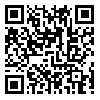Volume 13, Issue 2 (2022)
JHS 2022, 13(2): 179-216 |
Back to browse issues page
1- Associate Professor of Sociology, Islamic Azad University, Jahrom Branch , Krasekh@gmail.com
2- Ph.D. student of Political Sociology
3- Assistant Professor of Sociology, Islamic Azad University, Jahrom Branch
2- Ph.D. student of Political Sociology
3- Assistant Professor of Sociology, Islamic Azad University, Jahrom Branch
Abstract: (1746 Views)
The aim of this study is to examine economic power in the Qajar era as part of Michael Mann's quadruple social power approach. Michael Mann distinguishes four sources of power: political, ideological, military and economic. The art of the research is qualitative and its method are Bibliography, Which is carried out with the analytical method of Michael Mann. According to Mann, the four sources of social power are measured using various indicators. The main assumption of the research is that there are four sources of power in the Qajar era. Economic power is one of the most important sources of power in the Qajar era. The four sources of power and consequently the social impact of these sources of power, namely the court, the clergy, the chiefs of the tribes and nomads and the merchants, were in close and constant contact with one another. The results of the research show that the social representatives of economic power, business people, tried to maintain their independence in interaction and confrontation with other representatives of social sources of power such as the court, clerics and tribal and tribal leaders. Such conflicts led to an overlap of social actors, the two sources of economic and ideological power, the merchants and the clergy. The constitutional revolution and the tobacco movement were the end result of an overlap, followed by the collaboration of social agents from two sources of economic and ideological power as opposed to political power.
| Rights and permissions | |
 |
This work is licensed under a Creative Commons Attribution-NonCommercial 4.0 International License. |





